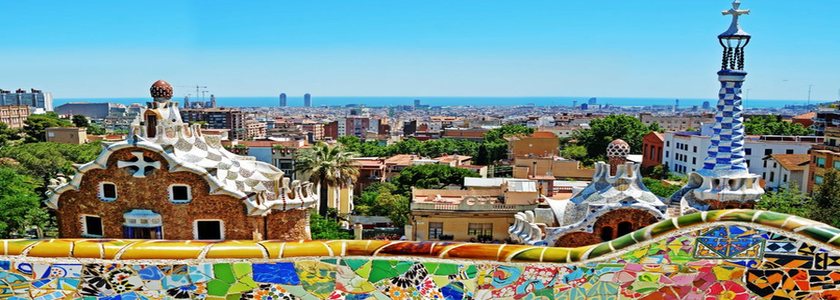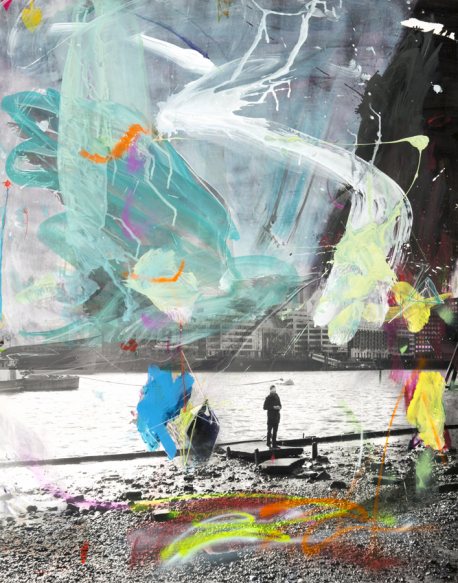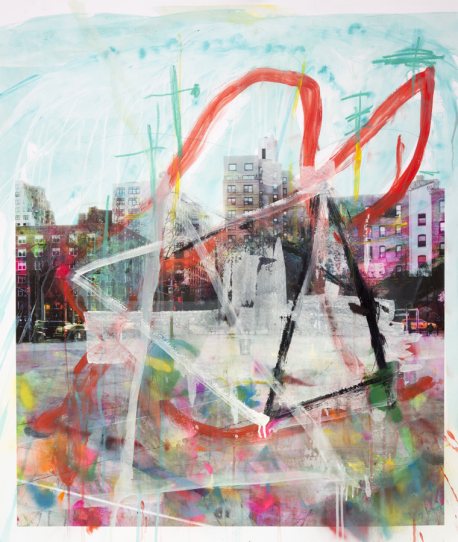B. 1971, Spain. Alberto Sanchez’ work is simultaneously an inquiry into the nature and essence of how we perceive the world we live in. His aim is to challenge our perception in order to question our relationship with space and time. By using expressive colours and dynamic brush strokes he transforms the obvious and invites us into his parallel landscapes. His body of work explores the notions of our human environment, urban expansionism and how individuals define themselves in an overloaded sensorial landscape. “The old world of Europe [for example] already has a strong set identity. It has an ancient history with many institutions and charismatic buildings which dominate the landscape. I try and stay away from the icons, yet capture a city that you can recognise.” In modern cities, “I had to figure out the key access points of the city, the major intersections where I could maximise the unity between human and metropolitan interaction.” In Sánchez’ most recent works he moves into a more sculptural exploration of his landscapes. By moving into this third dimension, Sanchez disrupts the common world and our expectations of a still image. These installations allow Alberto to explore and reconstruct his landscapes more broadly bringing a new dynamism to his practice. BIO Alberto Sánchez is a Spanish photographer and multi-media artist based in both Byron Bay, Australia and Madrid, Spain. He re-invents his own photographs using a unique hand-colouring technique, bridging a hybrid reality of physical and imagined worlds where photographic documentary is meshed with improbable landscapes, creating his own form of magic realism. Sánchez rediscovers the world through his viewfinder and re-visions that experience through his textured layering and evocative palette. His body of work explores the notions of urban expansionism, capitalism and how individuals define themselves in an increasingly overloaded sensorial environment. Represented by galleries in Australia, Europe and USA, Alberto has also exhibited extensively in Art Fairs in USA, Europe, South America and throughout Asia where a significant portion of his work is photographed. Alberto has been gaining recognition from both institutions and commercial galleries alike. His work has appeared in many press articles and publications. ARTIST STATEMENT I grew up in a small town in Castilla (Spain), an area surrounded by medieval castles, Roman aqueducts and gothic cathedrals, culture and traditions that are still very much anchored in old Roman hierarchical structures. Moving to Australia 10 years ago, I have been able to reflect, with the safety of distance, on how our identity, defined by place and time yields to the ever present spectre of change. In my work I aim to capture the metropolis: the pulse of the city. There is a pre-defined idea of what an urban setting is supposed to look like, a strong visual identity and by default, a set of rules. I like to challenge these rules with my painting and hand-colouring. By modifying this setting I hope to bring a new perspective to it. Cities have broad potential for landscape narrative as are so many varying elements. I use them in my favour, subtract them and play with them. It extends the idea of what the landscape can be without necessarily having to tear down buildings. I re-imagine the city, explore how it could be, a city in a timeless space, they are sketches of the future, simply a proposition. Our world is so dominated, formed and transformed by human beings, they are essential components of my urban landscape. I often obscure or mask the personal subject in my work. This anonymity frees them from the confines of place and allows a contemporary tribalism, reminding us of our histories, evoking ancient memories, the old dancing traditions and rituals where people wore masks to conceal their identity. Photography gives certainty. The camera records something that is, something that exists. I use black and white photography to minimise interference with perceived time or modern expectations of place. Painting the image allows us to enter a dual reality and to contemplate this juxtaposition. The fluorescent colours I use have an unnatural, almost sci-fi vibrancy. I want the viewer to be aware that it has been intervened by hand, that it has an illustrative narrative only achieved through the physical application of paint. The painting modifies what is already there. I search for balance between photography and paint, which then becomes a hybrid of both.













 callforentries.com
callforentries.com